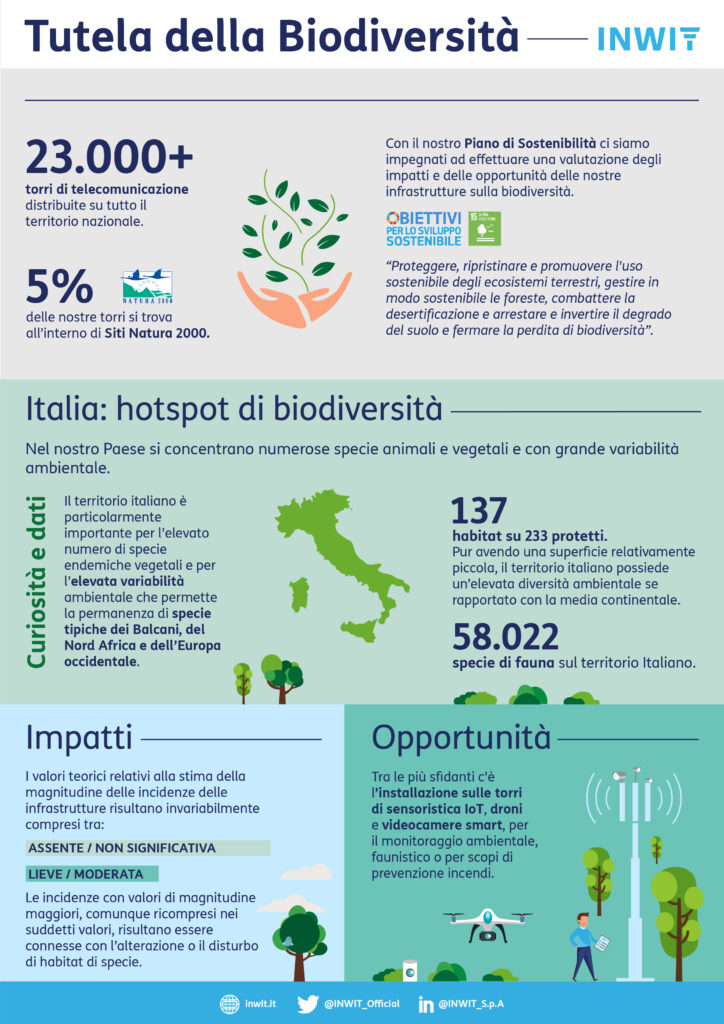INWIT for Biodiversity Protection

Biodiversity protection as an element of INWIT’s sustainability strategy, with the aim of assessing its impacts and exploiting its opportunities in relation to its infrastructure
The protection of biodiversity was identified as one of the relevant issues for INWIT and its stakeholders. For this reason, INWIT carried out an assessment of the impacts and opportunities of its infrastructures on biodiversity, reported in a position paper. This work aimed, firstly, to frame the impact on Italian biodiversity due to the activity of INWIT, the first Italian tower operator with its more than 23,000 telecommunication towers, by considering the different types of sites (raw-land and roof-top) and the different environmental typologies in which its infrastructures are located. Secondly, in a logic of tower as a service, opportunities were identified for the benefit and protection of biodiversity, which can be directly linked to INWIT’s activities, through the installation, on its infrastructures, of technologies suitable for monitoring biodiversity itself.
The analysis is fully in line with the initiatives undertaken by INWIT in the field of biodiversity protection, in the wake of the provisions of the UN 2030 Agenda with SDG 15, which envisages “Protect, restore and promote the sustainable use of terrestrial ecosystems, sustainably manage forests, combat desertification and halt and reverse land degradation and halt biodiversity loss”.
The Italian legislature has also shown attention to the issue, approving on 8 February 2022 the amendments to Article 9 (and 41) of the Constitution introduced the protection of the environment, biodiversity, ecosystems and animals among the fundamental principles of our Constitutional Charter.
The state of Biodiversity in Italy
With reference to the geographical context, Italy turns out to be a biodiversity ‘hotspot’, i.e. a place where numerous animal and plant species are concentrated and with great environmental variability. Specifically, the Italian territory is particularly important for the high number of plant endemic species, i.e. species with a range limited to the national surface, and for the high environmental variability that allows the presence of species typical of the Balkans, North Africa and Western Europe. The greatest pressures on biodiversity at national level derive from human activity and are mostly attributable to increasing land consumption for civil, industrial or agricultural use.
INWIT’s approach
INWIT has assessed, on the basis of the precautionary principle and with a conservative approach, the impacts of its activities, dividing them by type and treating them in detail. The theoretical estimation of impacts showed that the areas with the highest impact are natural areas or areas near water bodies, on which about 12% of INWIT towers are located, while the areas with the lowest impact are built-up areas, about 55% of INWIT towers. Agricultural areas, on which about 33% of the towers are located, show intermediate characteristics.
